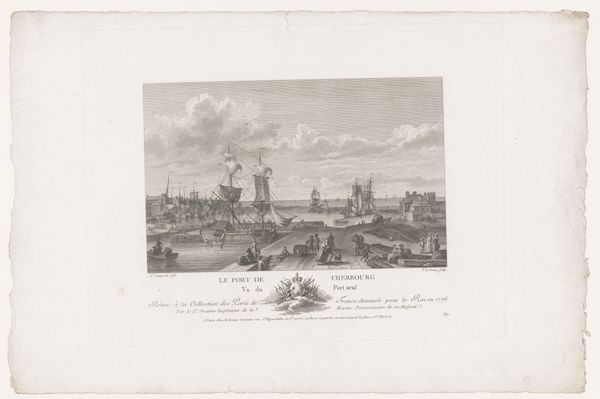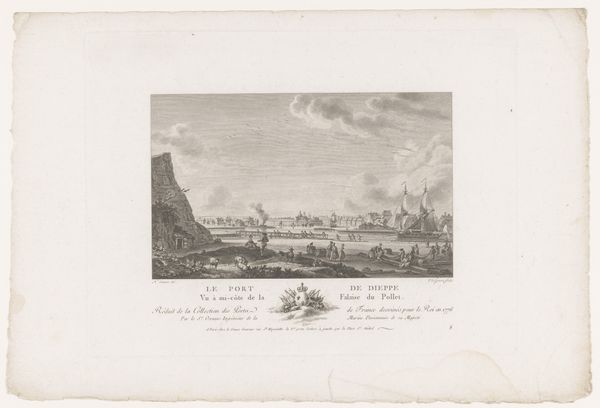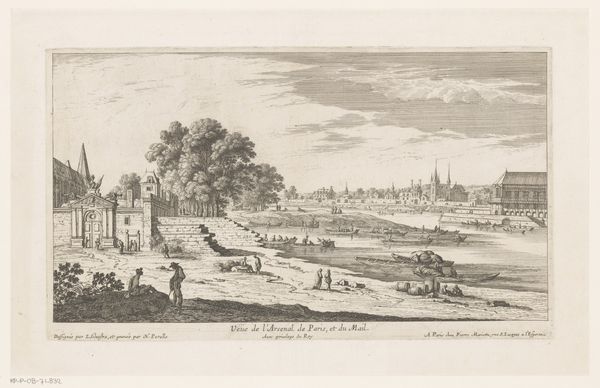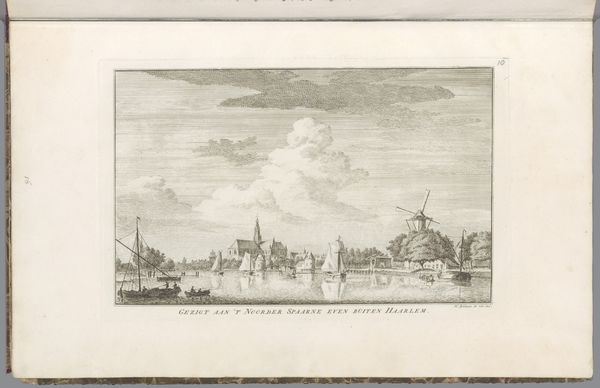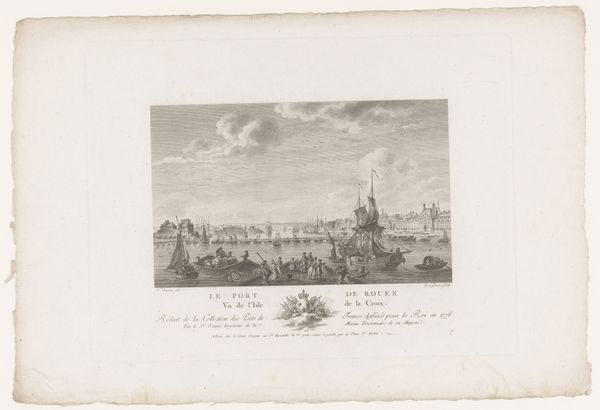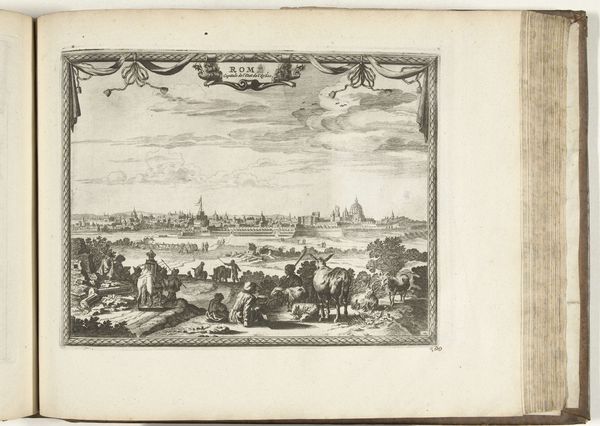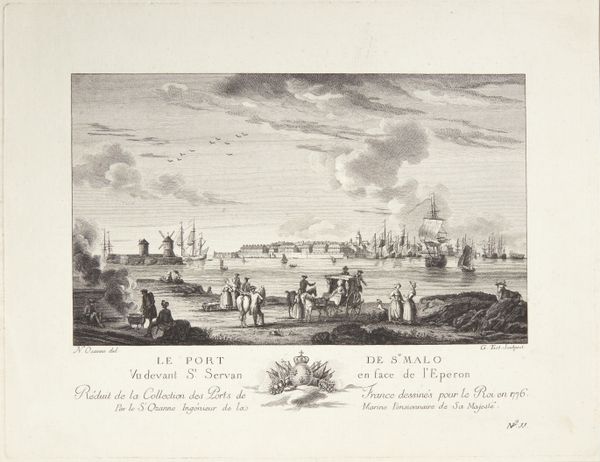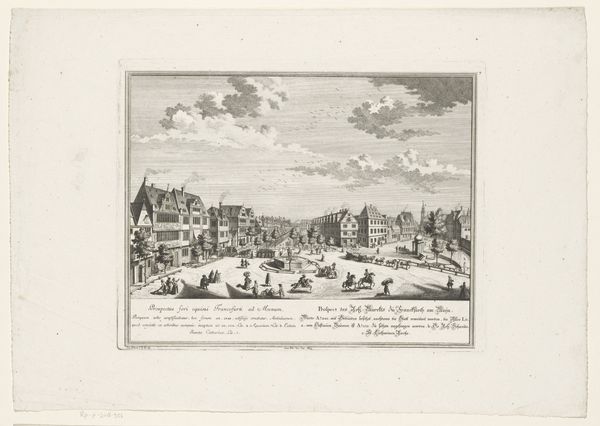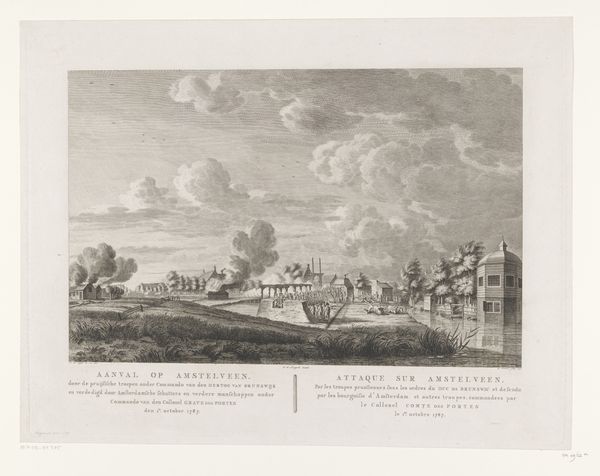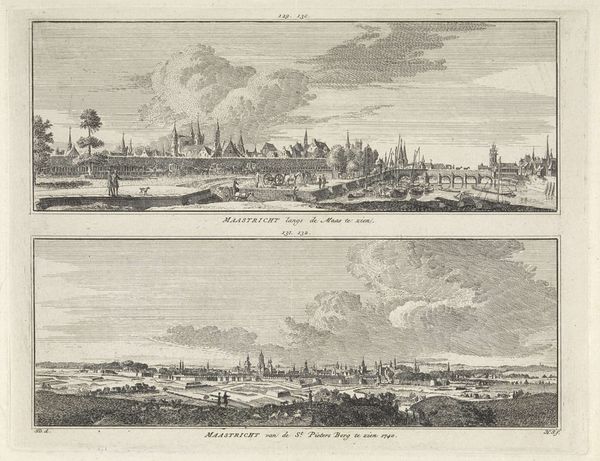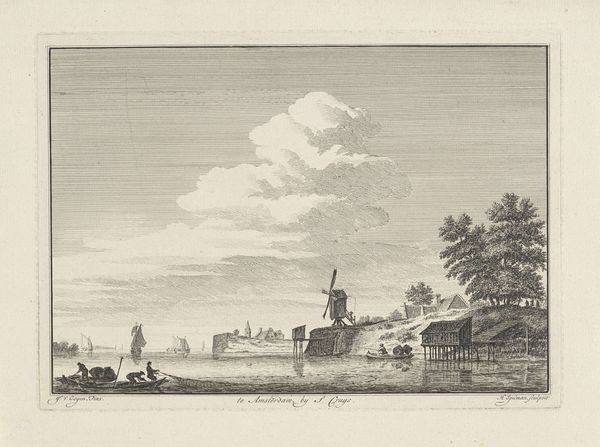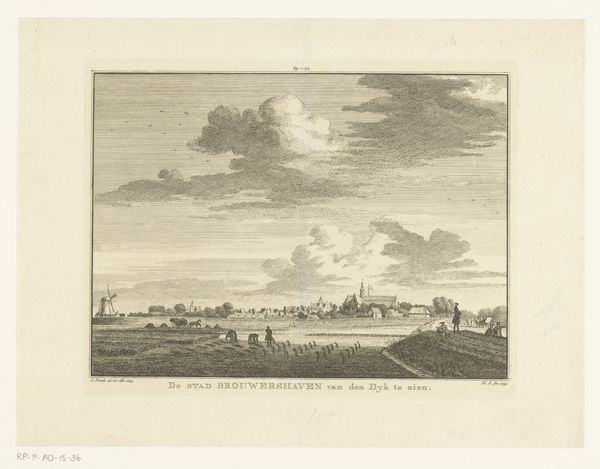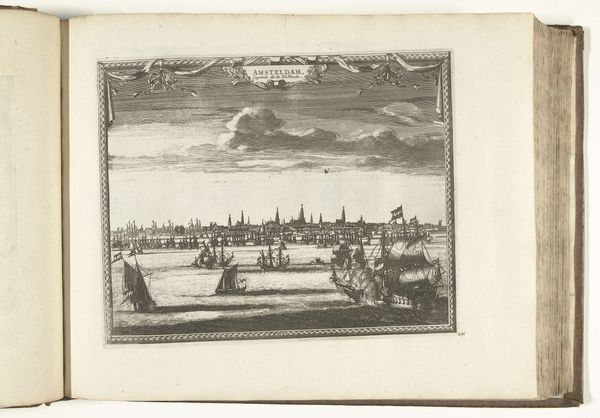
print, engraving
#
dutch-golden-age
# print
#
landscape
#
cityscape
#
engraving
Dimensions: height 298 mm, width 414 mm
Copyright: Rijks Museum: Open Domain
Editor: Here we have Robbert Muys' "Gezicht op het Groothoofd te Dordrecht," created in 1768. It's an engraving, and it feels incredibly detailed and calm, like a snapshot of daily life. What strikes you most about this piece? Curator: I’m immediately drawn to how this cityscape interacts with the Dutch Golden Age’s legacy and evolving civic identities. Prints like these weren't just aesthetic objects. How might this image function within the complex political and economic landscape of 18th-century Dordrecht? What narratives does it perpetuate, and whose voices are possibly absent? Editor: I hadn’t thought about absence. Is it suggesting a kind of ideal, maybe hiding any poverty or social issues that existed at the time? Curator: Precisely. The choice of the Groothoofd, a historically significant area, as the subject speaks volumes. The people in the boat; who do you think they are, and how do their clothes influence our view of society at this moment? Editor: I see what you mean; they seem like wealthier citizens, dressed in their finery. The image might be subtly reinforcing a power dynamic. Curator: Exactly. Considering that many Dutch Golden Age paintings celebrated mercantile power, Muys' print might subtly reinforce that social hierarchy, while at the same time documenting history. What do you think? Editor: That's a really interesting way of looking at it; I'd initially only considered the aesthetic aspect and hadn't thought about the social and political undercurrents it may hold. Curator: Understanding the historical and social context surrounding the artwork allows it to facilitate conversations with contemporary ideas. Editor: Thank you; I learned something new. This approach encourages dialogue between art history and intersectional contemporary thought.
Comments
No comments
Be the first to comment and join the conversation on the ultimate creative platform.
